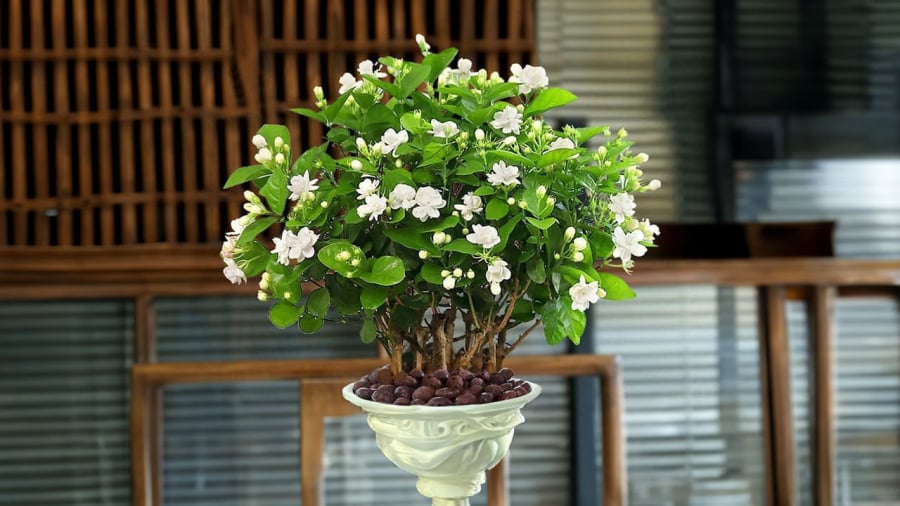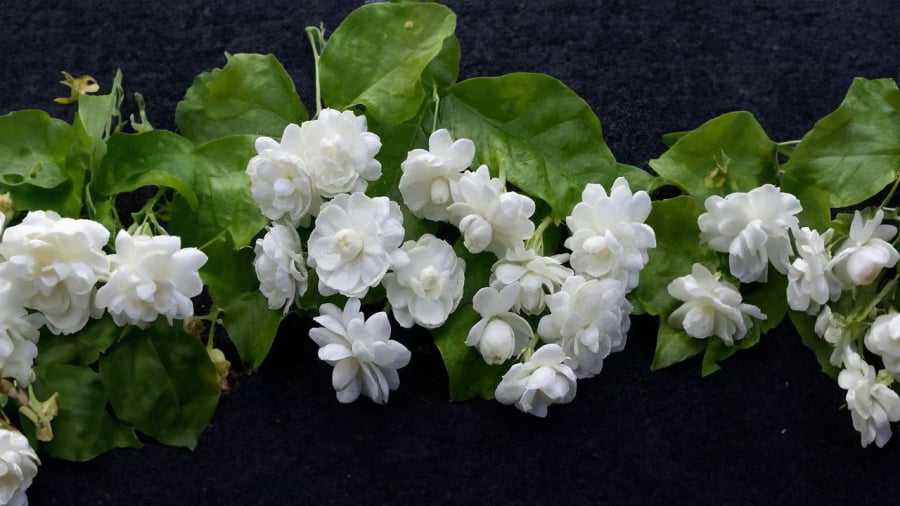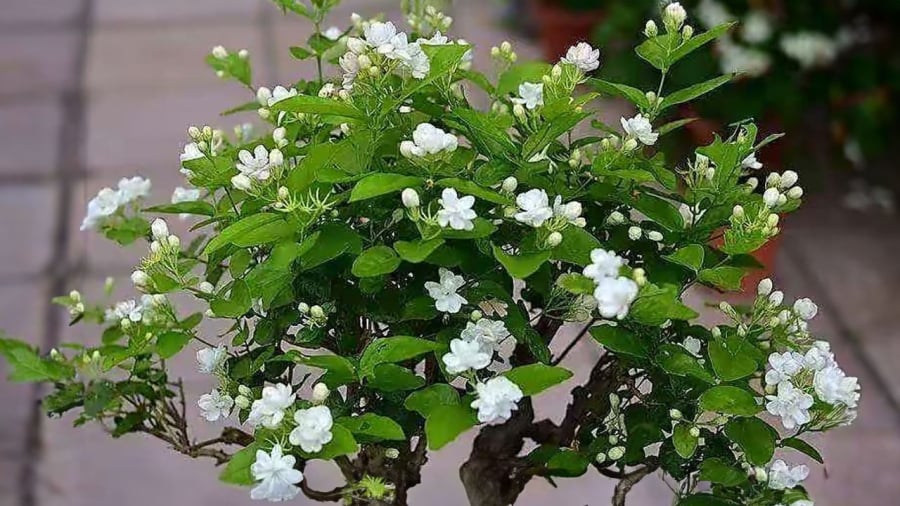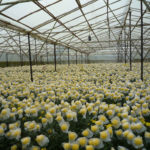Jasmine flowers are not only decorative but also have many uses in life. The fragrance of jasmine helps to relax and freshen the space. Jasmine flowers are used to make fragrant and healthy tea. Jasmine flowers are also used to enhance the aroma of many dishes such as sweet soups and cassava starch. Therefore, having a pot of jasmine flowers in the house not only serves as a decoration, but also provides fresh flowers for use when needed.
Although there are many pots of jasmine flowers in the garden with abundant blooming, why are there fewer flowers when you plant them? Apply the following tips now.

Pure and pleasant fragrance of white jasmine flowers
Remember the characteristics of jasmine flowers: Jasmine flowers bloom on new branches, not old branches.
Normally, many other ornamental plants will bloom on old branches, the older the plant, the more flowers it will have. But jasmine flowers bloom on new branches, not on old branches that have bloomed. That’s why your jasmine plant is old but has fewer flowers. Because of this characteristic, we need to prune deeply for jasmine plants so that they can grow new branches on the old trunk. The more you prune, the more branches and flowers you will have, because pruning will stimulate new branches to grow.
After each blooming, we use pruning shears, especially cutting the branches that have previously bloomed, the older flower branches. This is also a way to stimulate the development of shoots and branches of jasmine plants. When there are more secondary branches, the flower pots will have more flowers.

Regular pruning is one of the ways to help jasmine flowers bloom
How to fertilize jasmine flowers
After pruning, you should fertilize jasmine flowers so that new branches will grow after 15 days. After 15 days, the flower branches will grow 3 – 4 pairs of leaves and form flower buds. At this time, you need to supplement them with phosphorus and potassium fertilizer. Water them with potassium dihydro phosphate once every 7 days. Water them about twice a day, then the flower buds will bloom.
When the pot has many leaves but few flowers, it means the plant is getting too much nitrogen. Therefore, you need to avoid excess nitrogen so that the plants with good leaves will bloom.
When the plants have dark green leaves and grow a lot, it means they have excess nitrogen and will not bloom. At this time, stop fertilizing for about a month and limit watering to reduce nutrient supply to the plants, avoiding excessive absorption of nitrogen from the soil.

Good drainage is needed for jasmine flowers to avoid waterlogging
Pay attention to the temperature for jasmine flowers
Jasmine flowers cannot tolerate low or high temperatures. Jasmine flowers will bloom at around 25 degrees Celsius. Therefore, if you see the flowers being cold outside, you should move them to a warmer place, and if they are hot, move them to a cooler place. For example, if you plant jasmine flowers on a balcony during hot summer, you should move them to a cooler place.
Jasmine flowers prefer acidic water
Another characteristic of jasmine flowers is that they prefer acidic water, so occasionally watering them with diluted vinegar or sour soaked rice water will help the plants develop and bloom better. Therefore, you can dilute vinegar or soak rice water to water the jasmine flower pot.
Soil for planting jasmine flowers
Jasmine flowers prefer light and well-drained soil, without waterlogging. If you find that the soil is silver and unable to absorb water, or if the soil is too hard, you should replace it with new soil instead of using the old soil. You need to replace the soil for the plants.
Watering for jasmine flowers
Jasmine flowers like daily watering, but the watering must be done quickly and not leave water. Therefore, you need to focus on having soil and pots with good drainage. Excessive watering will cause the plants to die, and wait for the soil to dry before watering again. Jasmine flowers can tolerate a few days of drought, but they will die if waterlogged.
Light for jasmine flowers
Jasmine plants prefer light, so when planting them in pots, you should place them in a position where there is plenty of light. If you plant jasmine flowers indoors, you should take them outside to be exposed to sunlight 2 – 3 times a week to support photosynthesis. Jasmine plants are suitable for placing on balconies, house sills, and windows.
Preparing Yellow Apricot Flowers to be in Full Bloom for Tet Celebration
As the Lunar New Year quickly approaches, many families are looking for guidance when it comes to selecting, purchasing, maintaining, and decorating with beautiful golden apricots. To ensure you get the most out of this lovely tradition, this article will provide you with specific instructions for choosing, caring for and decorating with yellow apricot blossoms. Learn how to make the most of this iconic symbol of the Tet holiday season!



































